NIKON
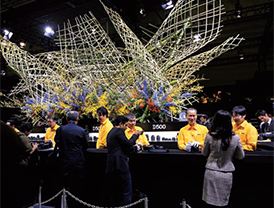
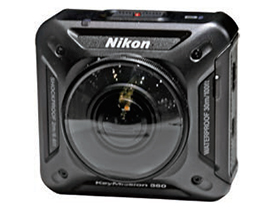
The Nikon stall saw a long queue to preview the D5 and the D500, which had their public outing for the first time. Both the cameras feature improved AF performance and extensive customisation options for the interface along with a new EXPEED 5 processor. The D5 in particular, impressed us with the fast AF tracking and burst rate
Another attraction at the Nikon booth was the new DL-series. This series of premium compact cameras currently has three models—DL24-85, DL18- 50 and DL24-500—all featuring 20 megapixel 1-inch Type CMOS sensors. The numbers indicate the 35mm equivalent zoom ranges of the lenses. We would like to see this as Nikon’s response to the Sony RX-series.
Nikon also showcased three Coolpix super-zoom compacts, the B700, B500 and A900. The B700 is a 20 megapixel model providing 60x optical zoom equivalent to 24-1440mm. It also has 4K video capability. The B500 has a 16-megapixel sensor and features 40x optical zoom equivalent to 22.5-900mm along with Full HD movie capture. The A900 is a compact 20 megapixel camera with 35x optical zoom equivalent to 24-840mm and capable of 4K video recording.
Apart from these regular cameras, the Nikon booth also had the KeyMission 360, which is a 4K-capable action camera that captures 360 degree views. The camera is rugged and waterproof up to 30m.
RICOH PENTAX
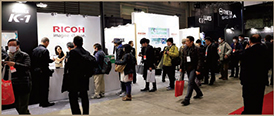 The Ricoh Pentax booth greeted CP+ visitors with a cutopen version of the new Pentax K-1. Of course, they had a few intact ones for trying out. The camera has a new innovative LCD that tilts to left and right in addition to the normal up and down motion. The camera is Pentax’s first full frame D-SLR and features a 36.4-megapixel sensor.
The Ricoh Pentax booth greeted CP+ visitors with a cutopen version of the new Pentax K-1. Of course, they had a few intact ones for trying out. The camera has a new innovative LCD that tilts to left and right in addition to the normal up and down motion. The camera is Pentax’s first full frame D-SLR and features a 36.4-megapixel sensor.
SIGMA
Sigma launched two mirrorless cameras, the SD Quattro and the SD Quattro H at the CP+. The SD Quattro features a 19.6 effective megapixel APS-C Type Foveon Quattro sensor, while the Quattro H houses a 25.5 effective megapixel APS-H Type Foveon Quattro sensor. Along with the cameras, Sigma booth also featured the new 50-100mm f/1.8 DC HSM Art and the 30mm f/1.4 DC DN Contemporary lenses. The 30mm lens is designed for mirrorless cameras and is available for Micro Four Thirds and Sony E (APS-C) mounts.
Sigma also launched the MC-11 adapter that helps you to attach a Sigma or Canon mount or Sigma lens to a Sony E-mount body without compromising on AF or other features. This adapter is believed to be the world’s first adapter to support all AF modes on Sony E-mount cameras.
OITA CANON FACTORY VISIT
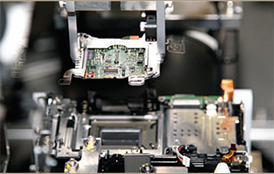
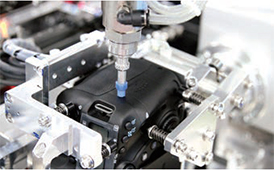 Oita is the capital city of Oita Prefecture on Kyushu Island, Japan. The prefecture is famous for its Onsen or geothermal hot springs, particularly around the city of Beppu. The city hosts Oita Canon factory, established in 1982. This is the main production centre for Canon’s cameras and optics. Canon can rightly be called a complete imaging company. Presently, the highly skilled teams here produce high precision optics including aspherical lenses, fabricate semiconductor chips, integrate the components on to circuit boards, assemble the cameras and lenses and finally put the finished products through rigorous tests. The factory also features the packaging section. Thus this one factory serves as the starting and end point of production. On our visit, we were able to witness the production line of the new 1DX Mark II in action. The production facility is so advanced that Canon is able to considerably reduce the manpower required to produce each type of equipment. And the rate of rejection of finished equipment left us stunned—1.5 parts per million. This roughly translates into 3 pieces rejected for every 20 lakh produced.
Oita is the capital city of Oita Prefecture on Kyushu Island, Japan. The prefecture is famous for its Onsen or geothermal hot springs, particularly around the city of Beppu. The city hosts Oita Canon factory, established in 1982. This is the main production centre for Canon’s cameras and optics. Canon can rightly be called a complete imaging company. Presently, the highly skilled teams here produce high precision optics including aspherical lenses, fabricate semiconductor chips, integrate the components on to circuit boards, assemble the cameras and lenses and finally put the finished products through rigorous tests. The factory also features the packaging section. Thus this one factory serves as the starting and end point of production. On our visit, we were able to witness the production line of the new 1DX Mark II in action. The production facility is so advanced that Canon is able to considerably reduce the manpower required to produce each type of equipment. And the rate of rejection of finished equipment left us stunned—1.5 parts per million. This roughly translates into 3 pieces rejected for every 20 lakh produced.
The Oita factory is a perfect example of Canon’s Kyosei philosophy. The word ‘Kyosei’ roughly means coexistence or living harmoniously with other living beings. The factory itself is located within a forest area abundant in biodiversity. As part of the Kyosei philosophy, Canon Oita participates in various biodiversity preservation measures such as breeding and releasing of Japanese pheasants and protecting creatures such as frogs, dragonflies, waterfowl, Oita salamander etc.
In another initiative, the company established Canon Wind Inc, a subsidiary to Oita Canon in November 2008 as part of CSR activities. Canon Wind aims to employ persons with intellectual disabilities and develop their skills. Currently with 21 employees and eight support staff, the organisation helps with packaging bundled accessories, preparing parts prior to insertion, assembling simple units, applying stickers, etc. The company has also established the Canon Athlete Club to create a sense of unity among the staff, which also involves their family members.
VISIT TO CANON HEADQUARTERS, SHIMOMARUKO
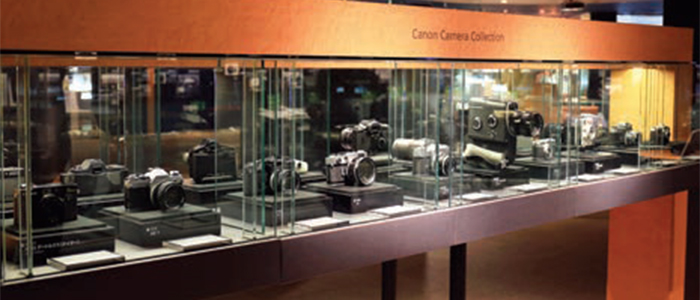
The Canon Shimomaruko headquarters was established in 1951. Here we were treated to the history of Canon from the Kwanon days to the present. The collection had all the legendary cameras and other products lined up.
We were particularly impressed by the Tsuzuri Project, launched by Canon in association with the Kyoto Culture Association. The project attempts to replicate traditional art works, some nearly 250 years old, with the help of Canon’s digital technology. Thus the handcrafted artwork can be viewed and appreciated by a wider populace even while the original work is carefully stored in controlled environment for preservation.
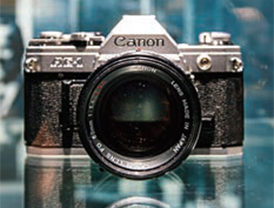
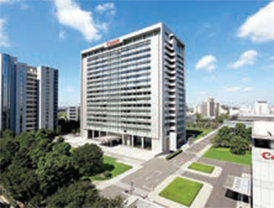
The gallery at the Shimomaruko headquarters also features breakthrough technology such as high-speed and high-precision security systems and also the futuristic MREAL (Mixed Reality) System. The MREAL system combines three-dimensional visualisation with virtual computer generated images in real time. This unit uses a head-mounted
display or hand-held display to synthesize three-dimensional computer generated images with real world environments.
It is heartening to know that Canon, even while employing the latest technologies to stay on top of competition, participates enthusiastically in the preservation of natural assets. We could see this commitment in everything that they showcased on our trip. |SP

